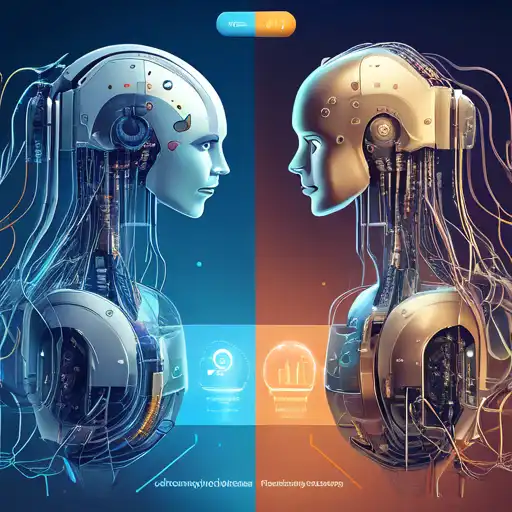Introduction to Machine Learning and Deep Learning
In the realm of artificial intelligence (AI), Machine Learning (ML) and Deep Learning (DL) are two pivotal technologies that have revolutionized how machines interpret data. While they share common ground, their approaches, applications, and complexities differ significantly.
What is Machine Learning?
Machine Learning is a subset of AI that enables systems to learn from data, identify patterns, and make decisions with minimal human intervention. ML algorithms are trained using large sets of data to perform specific tasks, such as email filtering or recommendation systems.
Types of Machine Learning
- Supervised Learning: The algorithm learns from labeled data.
- Unsupervised Learning: The algorithm finds hidden patterns in unlabeled data.
- Reinforcement Learning: The algorithm learns through trial and error to achieve a clear objective.
What is Deep Learning?
Deep Learning, a subset of ML, mimics the workings of the human brain in processing data for decision making. DL uses neural networks with several layers (hence 'deep') to analyze various factors of data. It's particularly effective in tasks like image and speech recognition.
Key Features of Deep Learning
- Automatic Feature Extraction: DL algorithms can automatically identify the features to be used for classification.
- Handles Unstructured Data: DL excels in interpreting unstructured data such as images and texts.
- Scalability: Performance improves with the amount of data, making DL highly scalable.
Machine Learning vs. Deep Learning: The Key Differences
While both ML and DL aim to teach machines to learn from data, their methodologies and applications differ in several ways.
Data Dependency
DL requires large amounts of data to perform well, whereas ML can work with smaller datasets.
Hardware Requirements
DL algorithms are computationally intensive and often require GPUs for processing, unlike ML algorithms that can run on lower-end systems.
Feature Engineering
In ML, feature extraction is manual and requires domain expertise. DL automates this process, reducing the need for human intervention.
Interpretability
ML models are easier to interpret and explain, making them preferable in industries where transparency is crucial. DL models, on the other hand, are often seen as 'black boxes'.
Choosing Between Machine Learning and Deep Learning
The choice between ML and DL depends on the specific problem, the amount of data available, and the computational resources at hand. For tasks involving complex patterns and large datasets, DL might be the better option. However, for simpler problems or when interpretability is key, ML could be more appropriate.
Conclusion
Understanding the differences between Machine Learning and Deep Learning is crucial for leveraging the right technology for your needs. While DL offers advanced capabilities for handling complex data, ML provides a more straightforward and interpretable approach for simpler tasks. As AI continues to evolve, the line between these two technologies may blur, but their core differences will remain relevant in guiding their application.
